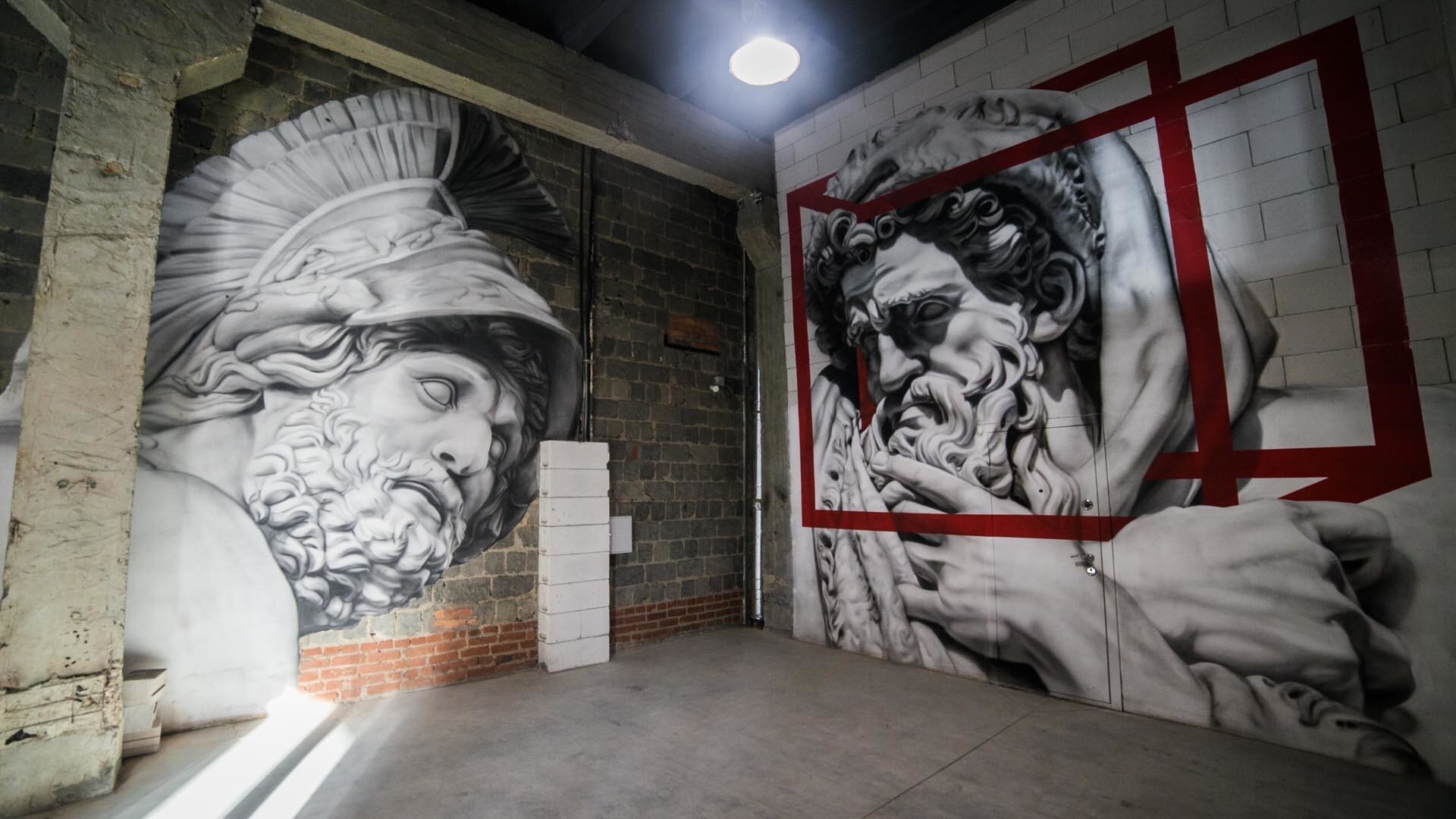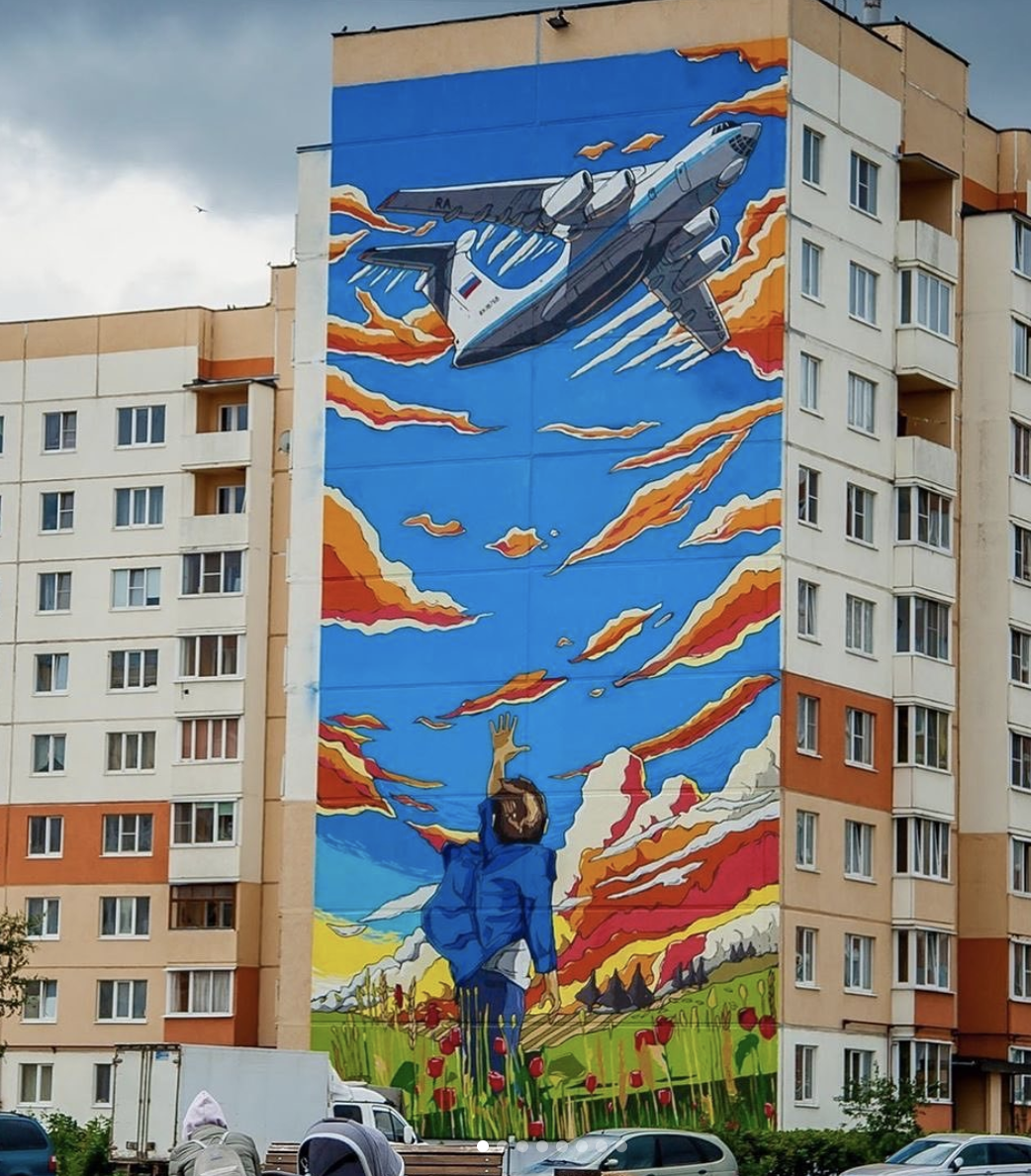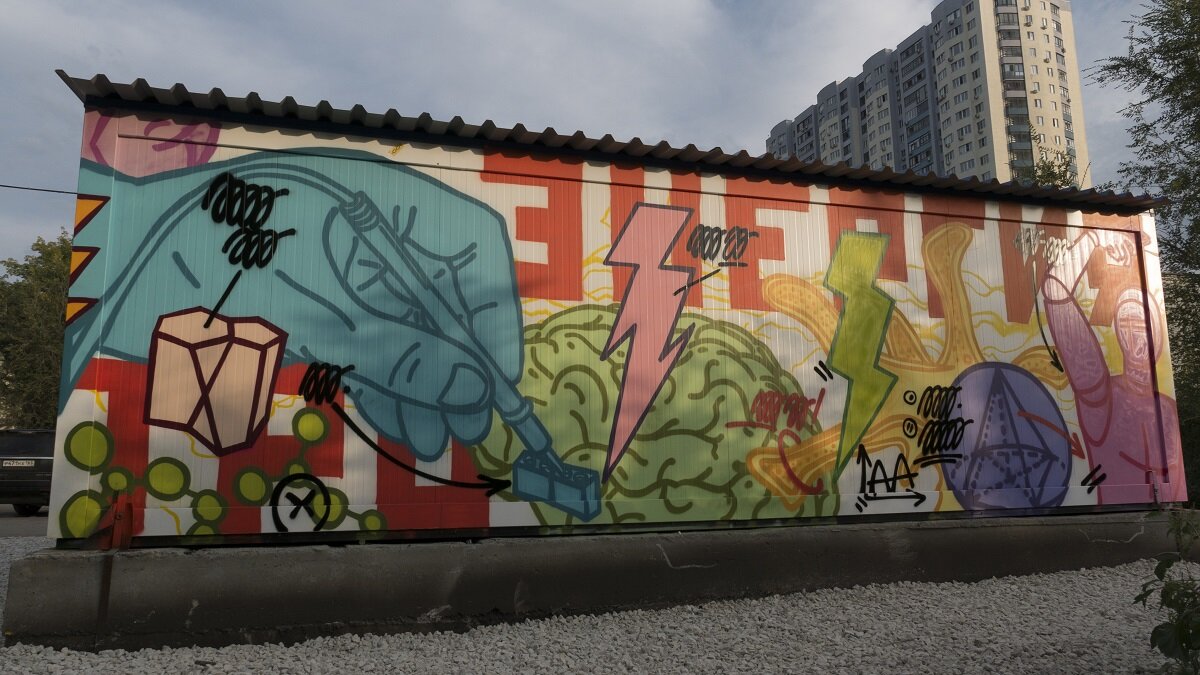Russia all around : creative cities 1/3
Let’s set the scene
2020 has been a testing year for everyone. Russia has rarely been out of international headlines. At a time when culture is in crisis, we feel it’s important to look behind the headlines at the initiatives being led by the young creatives and supportive regional governments across Russia, and the new image of modern Russia emerging.
Russian Creativity Week, 7 - 13 September 2020
This series of articles has been inspired by the inaugural Russian Creativity Week (Российская Креативная Неделя) that takes place between 7 - 10 September 2020 across Russia and 11 - 13 September in Moscow’s Gorky Park. Its mission? To strengthen the self-identity of the Russian creative industries and to realise the economic potential of creativity and creative partnerships in Russia.
Celebrating regional activity and strengthening partnership working is an emerging area of focus for the creative industries. Look, for example, at the work of НЕМОСКВА and a regional cultural leadership challenge and acceleration programme led by Flacon and the Universal University. Projects like Makers of Siberia bring together the work of those working in often-ignored regions. Addressing the impact of coronavirus on the creative industries is also a very real concern, with 13 Russian cities taking part in Creative Thursday, a 24 hour online creative meet-up held in July 2020, to try to find solutions to some of the problems created. At ArtyGeneration, we’re also expanding our focus to Russia’s less well-cities, including many of those featured here, and thinking about what cultural and creative lives will look like after Covid.
“Creative industries are among the most important non-energy segments of the Russian economy: according to various estimates, they contribute up to RUB 3 trillion a year, i.e., over 3% of the country’s GDP.”
We thought it was about time we focussed on some of the data that shows Russia’s growth potential in the creative industries and its regional creative capital. As traditional industries decline, capitalising on Russia’s emerging social and cultural capital presents a future-ready solution (like in Nickel, in the industrial Arctic North).
Creative capital index
Between 2016 and 2018, PriceWaterhouseCoopers (PwC) Russia, in partnership with Calvert 22 Foundation, analysed the creative capital of 25 Russian cities according to a set of five indicator groups: the city conditions for the development of the creative sector, the people that make up a city (including social demographics and traits like tolerance and openness), the general business and infrastructure indicators of the economy, government (local authority) support and interest, and branding (the external perception of the city). It also compared Moscow with other global cities.
What is creative capital?
According to the report authors, it’s the ‘aspects of the social climate, cultural and educational landscape, institutional infrastructure, and informational space which help to attract representatives of the creative professions and allow them to realise their potential’. While it might not be a rating of the contemporary arts offer in each city, and the cities may have been selected for size rather than creative population, its analysis of the regional cultural and creative infrastructure helps us think about the growth potential and sustainability of Russia’s cities. The report authors also write that it’s not a strictly objective report: these insights were informed by people as well as hard and fast figures. So we’ll analyse what we find and use it to shape a guide to Russia’s cities, and in particular, the interesting cities you can find outside of Moscow and St Petersburg.
Russia’s creative cities. Colour code: purple equals top five in the ranking; blue - 6 - 25; yellow - the creative cities and towns we think are also deserving of a mention. Check out the google map!
We don’t want to give away any surprises, but here’s a few insights. First, the top 25 creative cities span right across Russia’s 11 time zones. (That’s right - 11. Imagine the challenges that presents for cross-Russia regional partnership working) Secondly, what are the top five ranked cities for government openness and support? Khanty-Mansiysk, Yakutsk, St Petersburg, Izhevsk and Moscow. That took me by surprise.
This article takes you through the cities ranked 25 - 16. Come back next week for the cities ranked 15 - 6, and finally, the week after, discover the five highest ranked cities. In the final article, we’ll also see how Moscow - in the top five (spoiler) - measures up against its international peers, like New York, Seoul, London and Berlin.
Let’s start the count-down.
From number 25 to number 16, we see a few outliers. From their reputation and from visiting these cities, I expected Tomsk, Voronezh and Perm to be higher on the list. Perm has a reputation of being a leading creative city, but this reputation may not back up the creative potential and infrastructure on the ground. Voronezh has a young population, a decent cultural offer, an internationally renowned festival, and it’s not far from Moscow. Tomsk is the international student city of Siberia, but perhaps is still harnessing the infrastructure and support to develop its own creative economy.
Давай!
25: Omsk
Anton Gudkov, from Omsk but now living in Moscow, creating his large canvas for his Exercises in a White Room installation, taken from Tumblr
Anton Gudkov, an artist and experimental musician, left Omsk to move to Moscow. In his words, Omsk is a difficult place in terms of jobs and money. There is a cultural underground, but he described how difficult it was to make an artistic career sustainable. Omsk art residence marks itself out as the first digital creative cluster, in which it showcases its ‘residents’ and promotes local creative activity and exhibitions. Another (online) platform for the city’s creatives is JVCR, whose organisers often work together with the art gallery the Left Leg. Korpus 1, the Omsk electronic music platform unites musicians and fans of electronic music in the city and online. The city art museum also showcases Omsk’s local creators.
24: Volgograd
Formerly Stalingrad, Volgograd is infamous for its war history and I had never really considered its creative scene. Yet the Mashkov museum has its eyes both in Russia and abroad, with a Banksy exhibition opening on 5 September 2020. Loft 1890, a creative business space, can be found in the city centre, not far from its slightly bigger and friendly industrial rival, Ikra.
Picture from WelcomeVolgograd
23: Chelyabinsk
Picture from Svoboda2
From friends’ descriptions, this is an industrial city also famed for its proximity to the Urals, but it also hosts homes to the contemporary arts like the OkNo Gallery and Studio Theatre Maneken. It ranks highly for its educational offer, and the Southern Ural State University seems active and ambitious. A creative cluster, Svoboda2, has been founded by those behind Flacon in Moscow and other creative industry cluster projects. Masterskaya No. 21 is is another interesting creative cluster, in a city where regeneration of the central urban realm aims to stimulate the development of social capital and reduce a brain drain to other cities. There are calls to create an innovation and IT centre, like Moscow’s Skolkovo, that provides opportunities and a better living environment outside of the city for the younger professional class.
22: Voronezh
A Voronezh highway in Autumn, Nicole McNeilly (2018), CC BY-SA
It was interesting that this city came so low in the ranking: it feels eminently livable, has a beautiful city centre and surrounds, and has an increasing young, wealthy population thanks to the big businesses opening headquarters there. Voronezh has a good heritage offering as well as an evident desire for cultural change. Its annual international multidisciplinary Platonov Festival is known across the world.
21: Izhevsk
The Centre for the Territorial Development of the Udmurtskaya Oblast, with its capital Izhevsk, seems forward thinking in its grassroots and consultative regeneration of the city. Early plans to establish a creative cluster don’t appear to have materialised, and there has been critique of past urban development, but a planned redevelopment of the local arms factory may help to address this in future. Government support is rated as high (seventh place), but it is almost last for business opportunities and infrastructures.
Picture by Pasha Petrov
20: Veliky Novgorod
Veliky Novgorod has the highest ranking for the number of cultural institutes (presumably in proportion to its population). It has a rich history and cultural legacy but reports suggest that there is a significant brain drain of young people to St Petersburg and Moscow.
Picture from Insta account Veliky Novgorod.
19: Perm
Permm pic from Flickr
Perm comes out of the index as a city that has influence in other Russian regions. It ranks fifth in terms of its cultural offer, and Permm, the modern art museum, hosts experimental and challenging exhibitions by Russian and international artists. The city boasts numerous co-working spaces and trendy bars and cafes, but while the early Perm cultural revolution seemed to have been moving forward with momentum, this reportedly top-down process feels like it has reached a (hopefully temporary) hiatus. We should keep our eye on more grassroots initiatives as well as government-led efforts to redevelop the waterfront and city centre.
18: Samara
Samara has the lowest level of government support in the rankings, but a relatively high score for both business and people, coming sixth in terms of economic engagement and opportunities for business development (e.g. in terms of the number of freelancers and start-ups) and fifth for the availability of creative resources (infrastructure and networks). Creative tourism is seen as an area of potential growth and the city boasts a rich cultural offer in terms of museums and the performing arts and Dom77, a huge central creative cluster, hosting craftspeople and creatives and promoting an interesting nightlife. Moscow’s Tretyakov Gallery will be opening a branch in the city, and they’ve already started projects with local contemporary artists.
Misha Most streetart in Samara, a project by the Tretyakov State Gallery
17: Ulyanovsk
This UNESCO City of Literature is known to be at the heart of Russia’s literature heritage. Ulyanovsk has strong government support for attracting inward investment. The Ulyanovsk - Capital of Culture, a fund to support cultural events in the city, the Ulyanovsk Region Development Cooperation and the city’s Night Mayor, an initiative to increase the quality and availability of night-time cultural events, are all witness to this. It scores low for city and people, but high for branding. PwC’s analysis suggests this is one of the most multicultural cities in Russia. The city’s first creative space, Kvartal, has been around now for eight years, with Horizon coming later as its younger, similarly state-supported younger sibling.
16: Tomsk
This student city has an atmosphere that would warm any Winter evening. Looking at the indicators in detail, Tomsk comes first in the ranking of the status of the creative class, and not far behind for quality of life (seventh place). You can find a lot of music and events in places like Flat, artist discussions and exhibitions led by Splendor Gallery, and plans are in motion for Penati, a new creative cluster, led by initiators of the Siberian Centre for Design, also based in Tomsk.
Tomsk - picture from StartupBrics
That’s all for now. We’d love to know what you think, and if you have any recommendations of active artists and grassroots, underground or established initiatives that we could feature here.
Next week, we’ll move on to the cities ranked 15 - 6. Stay tuned!















